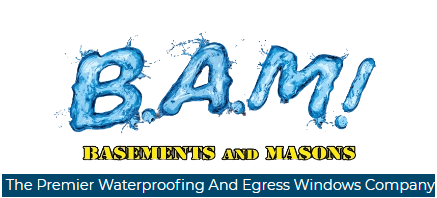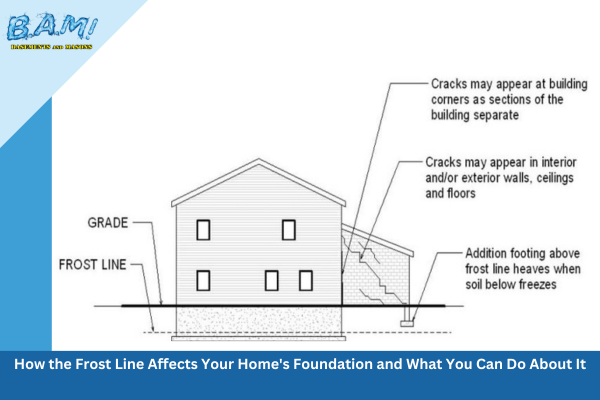Understanding the Frost Line
The frost line, also known as the freezing depth or frost depth, refers to the depth at which the ground in a specific area freezes during the coldest part of the year. It varies depending on your location and can range from a few inches to several feet deep. The frost line is a crucial factor to consider when building any structure, particularly in regions like Iowa with its bitter cold winters.
How the Frost Line Affects Your Foundation
Foundation Stability: The frost line can have a profound impact on your home’s foundation stability. When the ground freezes and thaws, it expands and contracts. This process exerts significant pressure on the foundation walls and can lead to cracks and even structural damage over time.
Settlement and Shifting: Homes built on shallow foundations that do not extend below the frost line are more susceptible to settling and shifting. As the ground freezes and thaws, it can cause the foundation to move, leading to uneven settling and potential structural issues.
Water Damage: Another concern related to the frost line is water damage. When the ground thaws in the spring, the water created from melting snow and ice can seep into the foundation. This can lead to moisture issues, such as basement flooding, mold growth, and deterioration of the foundation materials.
How to Protect Your Foundation from Frost Line Effects
Build Below the Frost Line: One of the most effective ways to protect your home’s foundation from frost line effects is to construct it below the local frost line depth. This typically involves excavating the ground to the appropriate depth and pouring a foundation that extends below the frost line. This can help prevent the foundation from being impacted by seasonal freezing and thawing.
Insulate the Foundation: Proper insulation can help mitigate the effects of the frost line. Insulating materials can be added to the exterior of the foundation walls or incorporated into the foundation itself. This insulation helps maintain a more stable temperature around the foundation, reducing the risk of frost-related damage.
Proper Drainage: Ensuring that your property has effective drainage systems in place can help divert water away from the foundation. This reduces the risk of water infiltration during thawing periods. Proper grading, downspouts, and drainage channels can all contribute to improved drainage around your home.
Regular Inspections: Routine inspections of your foundation can help identify early signs of damage. Look for cracks, bulging or bowing walls, or uneven settling. Also, if you notice windows sticking, cracks in ceilings and doors not closing correctly, this can be a sign of settlement. Addressing these issues promptly can prevent them from worsening and becoming costly to repair.
Waterproofing: We can’t stress enough how important waterproofing is to the health and dryness of your crawl space basement. From controlling moisture to preventing floods, there are many solutions that can create the perfect basement environment. Consider the following:
Interior drainage – These systems arrest water that enters the basement walls/floor and directs it to the sump pump.
Basement sump pump – Coupled with interior drains, a properly functioning sump pump ejects water that seeps through or gets inside through snow melts or flooding.
Test your sump pump to ensure it’s working correctly. If necessary, consider a battery backup system to keep it operational during power outages.
Consult a Basement foundation Professional: When it comes to your home’s foundation and dealing with the frost line, it’s often best to consult with a professional engineer or contractor. They can assess your specific situation, recommend appropriate measures, and ensure that your foundation is built or repaired correctly.
The frost line can have a significant impact on your home’s foundation. Understanding how it works and the potential consequences it can have been essential for homeowners, especially those in regions with cold winters. By taking proactive steps such as building below the frost line, insulating, ensuring proper drainage, and regular maintenance, you can protect your home’s foundation and ensure its longevity and stability for years to come. Remember that consulting with Basement waterproofing and foundation repair professionals is crucial when dealing with foundation-related issues, as their expertise can make a significant difference in the safety and durability of your home.
Call BAM the best Basement waterproofing and Foundation repair Professionals
Bam Basements and Masons of Des Moines is a reputable and trusted waterproofing and foundation repair company that has established itself as a cornerstone of quality craftsmanship in the Des Moines area. With a strong focus on basement waterproofing and masonry work, we have earned a stellar reputation for our dedication to excellence and attention to detail. Bam Basements and Masons consistently delivers exceptional results. Our team of skilled professionals combines technical expertise with high quality materials and workmanship. Give BAM Basements a call for an estimate at 515-963-0226.

